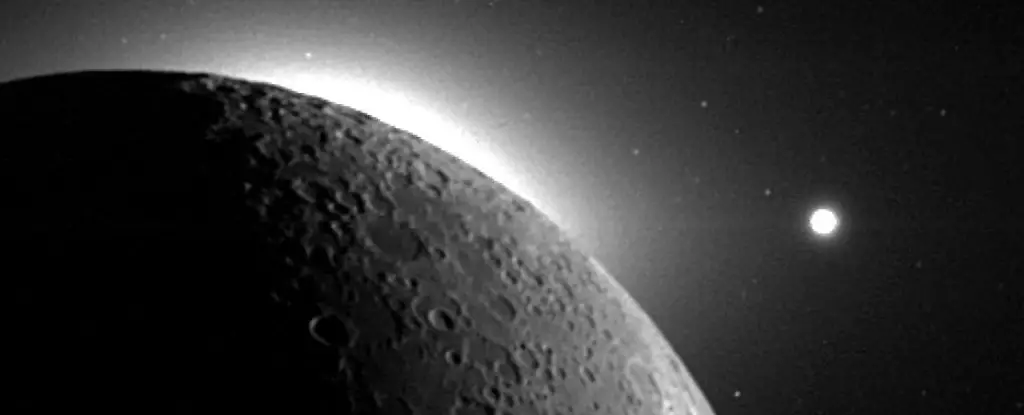The Earth-Moon system is a unique case in the Solar System, presenting intriguing questions regarding its formation and evolution. Unlike other planets, many of which sport multiple moons or none at all, Earth has a single large satellite that is remarkably substantial compared to the planet itself. The complexity of their relationship raises important inquiries not only about the mechanics of planetary systems but also about the processes leading to the formation of moons in general. In the realm of planetary evolution, understanding how our Moon originated invites exploration of various hypotheses that seek to elucidate this enigma.
For decades, the prevailing explanation for the Moon’s origin has been the Giant Impact Hypothesis. According to this theory, a Mars-sized body collided with the early Earth, resulting in a cosmic debris field from which the Moon ultimately formed. This notion effectively accounts for the striking similarity in the isotopic and mineral compositions between Earth and its Moon. Yet, alternative theories have emerged that challenge this perspective, suggesting different pathways to a common origin.
Recent studies, notably by astronomers Darren Williams and Michael Zugger from Pennsylvania State University, have introduced the concept that the Moon could represent an “adopted” body, potentially born elsewhere in the Solar System and later captured by Earth’s gravitational pull. This line of inquiry prompts us to re-evaluate traditional hypotheses and offers fresh avenues for study regarding how planets and moons interact gravitationally.
The notion that the Moon could have been gravitationally captured is rooted in the principles of celestial mechanics. In essence, if two celestial bodies pass closely enough to one another, it is conceivable for one body to capture the other, forming a stable orbit over time. This process, known as binary capture, showcases how complexity can arise in planetary systems.
Williams and Zugger have suggested that Earth’s ability to capture the Moon—even after its formation—could have involved a more massive object than the Moon itself, such as an object comparable in size to Mercury or Mars. This could allow for an elliptical capture orbit that might eventually stabilize into the current trajectory of the Moon. Such gravitational interactions are not merely theoretical; they are abundant in the Solar System. Notable examples include the Neptunian moon Triton, which likely originated in the Kuiper Belt before being captured by Neptune’s gravity, evidenced by its unusual orbit that runs contrary to its fellow moons.
Challenges and Complications in the Capture Theory
Nevertheless, with new theories come significant challenges. One must grapple with the compatibility of elemental and isotopic data from Earth and its Moon, which overwhelmingly supports a shared origin as opposed to a capture scenario. The striking similarities in their mineral compositions serve as compelling evidence against the idea that the Moon could have easily been snatched from a distant region.
Moreover, any viable capture event would have needed to unfold with specific timing and precision—an exceedingly rare occurrence within the chaotic environment of the early Solar System. This introduces an element of probability into the equation; while mathematically possible, the capture theory must confront the empirical strengths of the prevailing models.
Understanding the origins of the Moon is not merely an academic pursuit; it holds significant implications for one of humanity’s most profound questions regarding life’s origins on Earth. The Moon is believed to have played a crucial role in stabilizing Earth’s axial tilt and moderating climatic changes throughout geological history. These factors are vital for sustaining life as we know it.
Investigating the complexities of Earth and Moon interactions enhances our comprehension of planetary systems beyond our own. This understanding could guide astrobiologists in their quest to identify potentially habitable exoplanets in other solar systems, where moons may play a similar stabilizing role.
The exploration of how the Earth-Moon system came to be showcases the dynamic nature of scientific inquiry, capturing a narrative that evolves as new data emerges. As Williams aptly states, “No one knows how the Moon was formed.” The quest for answers continues, prompting us not only to reconsider the formation of our nearest celestial companion but also to engage in the rich tapestry of how planetary systems come together across the universe. The interplay between collision and capture theories reflects a broader shift in our understanding—a journey still unfolding in the vast cosmic landscape.

Leave a Reply